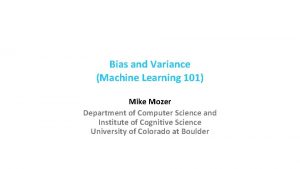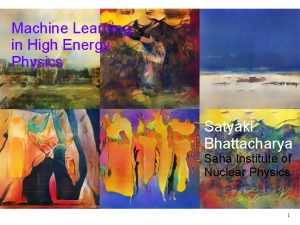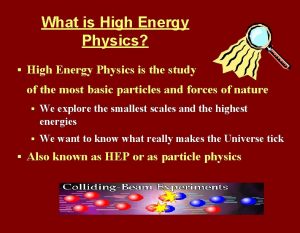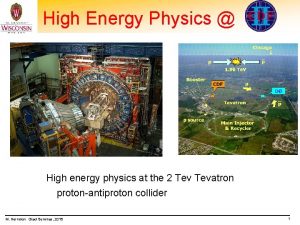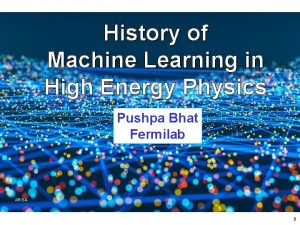Machine Learning in High Energy Physics the Search










- Slides: 10

Machine Learning in High Energy Physics: the Search for Vector-Like Quarks Alex Stoken University of Arizona Class of 2019 Dr. Erich Varnes UA High Energy Physics Group, ATLAS Experiment April 14, 2018 | NASA Space Grant Symposium | Tucson, AZ

Terminology Vector-Like Quarks (VLQ) Machine Learning • Predicted particle in many new physics theories • Algorithmic “learning” from patterns and structures within datasets INPUTS OUTPUTS LEARNING Fig 1: Feynman diagram of VLQ pair production Fig 2: Neural Network learning model

Background: Searching for Particles

The ATLAS Detector at the Large Hadron Collider 1 billion collisions(events)/sec 200 interesting events/sec Source: ATLAS Outreach

Research Question How much can generalized machine learning algorithms improve sensitivity in VLQ detection? Boosted Decision Tree Output How can we separate VLQ (signal) from all other physics events (background)?

Methodology Data Acquisition (or Monte Carlo modeling) Data Storage + analysis Data Cleaning Model development+ testing

HT �� φ�� 1, �� 2 Feature Selection Past experiments and current theories inform specific independent variables (features) to use (“feed”) in our models to best predict VLQ events ETMiss

Evaluating ML Performance

Next Steps and Future Efforts • Apply model to data to either find evidence for VLQ or put better limits on masses • Continue to tune algorithms to improve ML performance (precision!) Fig 12: Current limits on VLQ mass (ATLAS Experiment)

Thank you
 Mike mozer
Mike mozer Concept learning task in machine learning
Concept learning task in machine learning Analytical learning in machine learning
Analytical learning in machine learning Pac learning model in machine learning
Pac learning model in machine learning Machine learning t mitchell
Machine learning t mitchell Inductive and analytical learning
Inductive and analytical learning Inductive and analytical learning
Inductive and analytical learning Instance based learning in machine learning
Instance based learning in machine learning Inductive learning machine learning
Inductive learning machine learning First order rule learning in machine learning
First order rule learning in machine learning Eager learning examples
Eager learning examples
